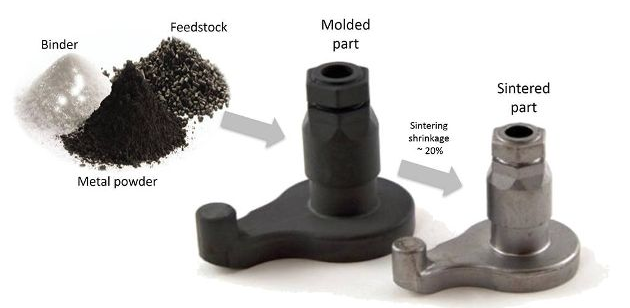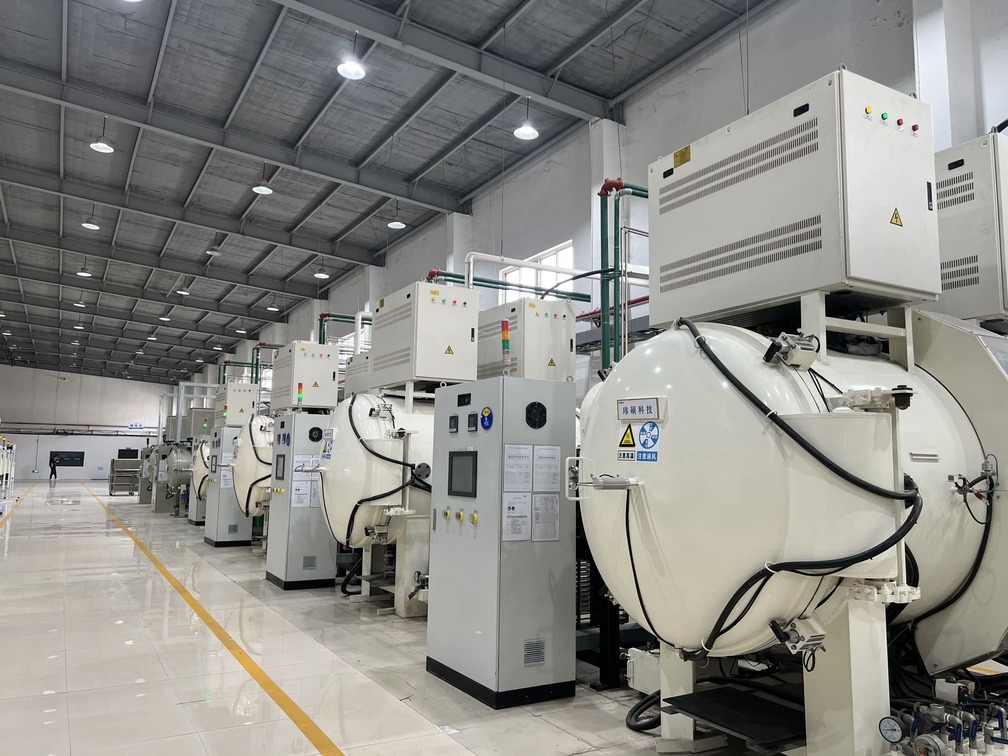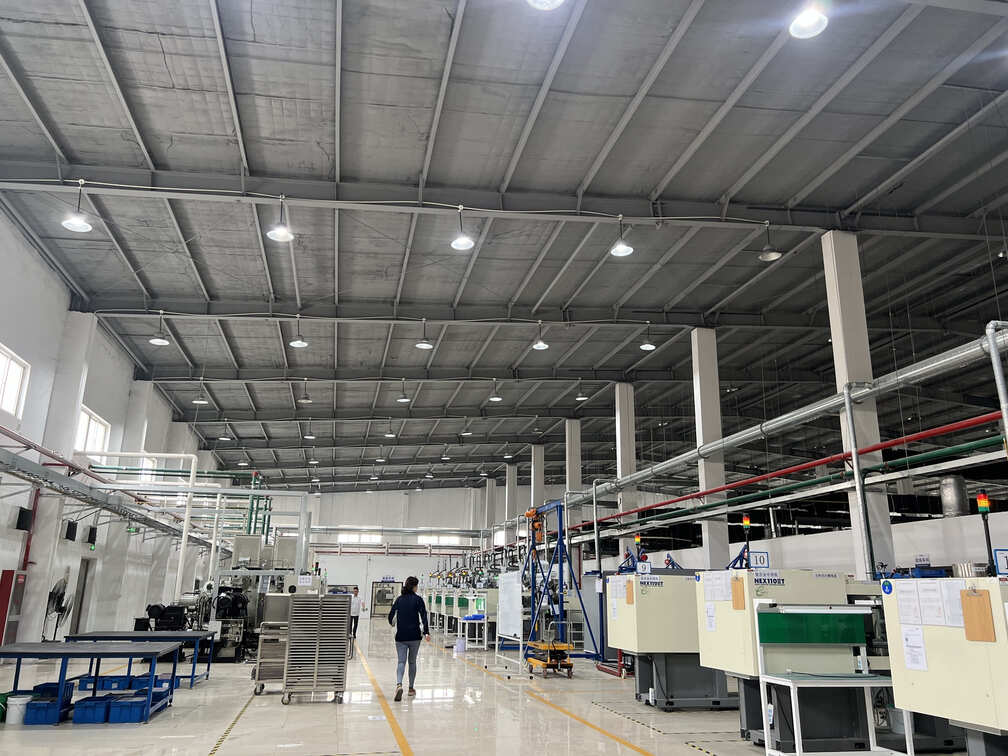Metal injection molding offers a groundbreaking way to create intricate and high-precision metal parts. This process combines the flexibility of plastic injection molding with the strength of metal, allowing you to achieve designs that traditional methods cannot match. It enables the production of small, complex components with exceptional detail and durability. Whether you need parts for industrial, medical, or consumer applications, this method ensures superior quality and performance. By using this innovative technique, you can overcome the limitations of conventional manufacturing processes and unlock new possibilities in design and functionality.

How Metal Injection Molding Works
Metal injection molding involves several precise steps to transform powdered metal into complex, high-quality components.
Material Preparation
The process begins with material preparation. You mix fine metal powders with a binder, which typically consists of plastic and wax. This mixture forms a feedstock that is easy to mold. The binder holds the metal particles together, creating a pliable material for shaping. You must ensure the feedstock has a uniform consistency to achieve accurate results during molding.
Injection Molding
Once the feedstock is ready, you inject it into a mold using high pressure.
Debinding
Debinding removes the binder material from the green part. This step involves either chemical or thermal methods to extract the binder without damaging the metal structure. You must carefully control the debinding process to avoid defects. After debinding, the part, now called a “brown part,” retains its shape but remains porous and weak. It is ready for the next stage, where it gains its final properties.
Sintering
Sintering is the final and most critical step in the metal injection molding process. During this stage, you heat the debound “brown part” to a temperature just below the metal’s melting point. This high-temperature treatment causes the metal particles to bond together, eliminating porosity and increasing the part’s density and strength.
The sintering process transforms the fragile brown part into a solid, durable component. As the temperature rises, the metal particles fuse, reducing the part’s size by up to 20%. This shrinkage is predictable, allowing you to maintain tight tolerances and achieve the desired dimensions. Proper control of the sintering environment, including temperature and atmosphere, ensures the final part meets your specifications.
Sintering also enhances the mechanical properties of the part. The process improves hardness, tensile strength, and resistance to wear. You can achieve near-theoretical density, which makes the part comparable to those produced by traditional manufacturing methods like machining or casting.
To optimize results, you must carefully select the sintering conditions based on the material and part design. Factors such as heating rate, holding time, and cooling rate play a significant role in determining the final quality. By mastering these variables, you can produce components with exceptional performance and reliability.
Advantages of Metal Injection Molding

High Precision and Complexity
Metal injection molding allows you to create parts with intricate geometries and tight tolerances. This process excels in producing components that would be difficult or impossible to manufacture using traditional methods. You can achieve features like thin walls, sharp edges, and complex internal structures with ease. The precision of this method ensures that your parts meet exact specifications, reducing the need for secondary machining or adjustments. By using this technique, you can produce high-quality components that perform reliably in demanding applications.
Material Versatility
With metal injection molding, you can choose from a wide range of materials to suit your specific needs. This process supports various metals and alloys, including stainless steel, titanium, and nickel-based alloys. Each material offers unique properties, such as corrosion resistance, high strength, or thermal stability. You can select the material that best matches the requirements of your application. This versatility makes the process suitable for industries like automotive, medical, and aerospace, where different materials are essential for different functions.
Cost-Effectiveness
Metal injection molding provides a cost-effective solution for manufacturing complex parts in large quantities. The process minimizes material waste by using only the required amount of feedstock for each part. You can also reduce labor costs since the method automates most of the production steps. Additionally, the ability to produce near-net-shape components eliminates the need for extensive post-processing, saving both time and money. For high-volume production, this technique offers significant cost advantages compared to machining or casting.
Superior Mechanical Properties
Metal injection molding delivers parts with exceptional mechanical properties, making it a preferred choice for demanding applications.
The sintering process plays a key role in enhancing mechanical properties. By bonding metal particles at high temperatures, you create parts with near-theoretical density. This density improves the hardness and tensile strength of the material. Your components can withstand heavy loads, repeated stress, and harsh environments without failure.
Another advantage lies in the uniformity of the material structure. Metal injection molding produces parts with consistent grain structures, which contribute to their superior performance. You avoid weak points or inconsistencies that could compromise the integrity of the part. This uniformity ensures that your components maintain their strength and functionality over time.
You also benefit from the ability to tailor mechanical properties to specific needs. By selecting the right metal or alloy, you can optimize characteristics like corrosion resistance, thermal stability, or impact strength. For example:
- Stainless steel offers excellent corrosion resistance for medical or marine applications.
- Titanium provides high strength-to-weight ratios for aerospace or automotive uses.
- Nickel-based alloys deliver outstanding thermal stability for high-temperature environments.
These tailored properties allow you to design parts that meet the exact requirements of your application. Whether you need components for industrial machinery, medical devices, or consumer electronics, metal injection molding ensures they perform at their best.
Applications of Metal Injection Molding

Automotive Industry
Metal injection molding plays a vital role in the metal injection molding…
You also benefit from the ability to produce lightweight parts without compromising durability. This feature is crucial for improving fuel efficiency and reducing emissions. By adopting this method, you can achieve complex designs that enhance vehicle performance and reliability. The automotive industry relies on this technology to meet the growing demand for advanced, high-quality components.
Medical Devices
In the medical field, metal injection molding enables the production of highly precise and biocompatible components. You can create surgical instruments, orthodontic brackets, and implantable devices with exceptional accuracy. These parts often have intricate geometries that traditional manufacturing methods cannot achieve. The process ensures that each component meets the stringent requirements of the healthcare industry.
The use of materials like stainless steel and titanium enhances the functionality of medical devices. These metals offer excellent corrosion resistance and strength, making them ideal for applications inside the human body. You can also produce parts in large quantities without sacrificing quality. This capability supports the mass production of medical tools and devices, ensuring consistent performance and reliability.
Consumer Electronics
Metal injection molding has transformed the consumer electronics industry by enabling the creation of compact and complex components. You can use this process to manufacture connectors, hinges, and structural parts for devices like smartphones, laptops, and wearables. These components require high precision and durability to function effectively in modern gadgets.
The process allows you to achieve sleek designs and lightweight structures, which are essential for portable electronics. It also supports the use of various materials, giving you the flexibility to meet specific design and performance needs. By leveraging this technology, you can produce high-quality parts that enhance the functionality and aesthetics of consumer electronics.
Aerospace and Defense
Metal injection molding (MIM) has become a key manufacturing method in the aerospace and defense industries. You can use this process to create components that demand precision, strength, and reliability. These industries often require parts with intricate geometries and tight tolerances, which MIM delivers effectively.
In aerospace, you can produce lightweight yet durable components. Weight reduction is critical for improving fuel efficiency and overall performance in aircraft. MIM allows you to achieve complex designs without adding unnecessary weight. Examples of aerospace applications include turbine blades, fasteners, and structural brackets. These parts must withstand extreme conditions, such as high temperatures and intense mechanical stress. MIM ensures that these components meet the rigorous standards of the aerospace sector.
In defense, you can rely on MIM to manufacture high-performance parts for weapons…
The material versatility of MIM also benefits aerospace and defense applications. You can select metals and alloys that offer specific properties, such as corrosion resistance, thermal stability, or high strength-to-weight ratios. For example:
- Titanium is ideal for lightweight, high-strength components in aircraft.
- Stainless steel provides excellent corrosion resistance for parts exposed to moisture or chemicals.
- Nickel-based alloys deliver superior thermal stability for high-temperature applications.
By choosing the right material, you can optimize the performance of your components for their intended use.
Another advantage of MIM in these industries is its ability to produce parts in large quantities without compromising quality. You can achieve consistent results across multiple production runs, ensuring that every component meets your specifications. This consistency is crucial for maintaining safety and reliability in aerospace and defense systems.
Metal injection molding empowers you to push the boundaries of design and functionality in aerospace and defense. By adopting this technology, you can create innovative solutions that meet the highest performance and reliability standards.
Comparison with Other Manufacturing Methods
Understanding the differences between metal injection molding and other techniques can help you make informed decisions when choosing a manufacturing method. Each method offers unique advantages and limitations depending on your specific needs.
MIM vs. Machining
While machining excels in producing low-volume, highly customized components, it struggles with efficiency for complex geometries or high-volume production. Metal injection molding allows you to create intricate designs with minimal material waste.
Machining often requires significant post-processing to achieve tight tolerances. In contrast, metal injection molding produces near-net-shape parts, reducing the need for additional finishing. If you prioritize precision and cost-efficiency for large-scale production, MIM outperforms machining. However, machining remains ideal for prototyping or creating large, simple parts.
MIM vs. Casting
Casting involves pouring molten metal into a mold to form a part. This method works well for large components and simple shapes. However, casting struggles with achieving the fine details and tight tolerances that metal injection molding provides.
If your project demands intricate designs and superior strength, MIM offers a better solution than casting.
MIM vs. Additive Manufacturing (3D Printing)
Additive manufacturing, or 3D printing, builds parts layer by layer using materials like metal powders or polymers. This method excels in rapid prototyping and creating highly customized designs. However, it falls short in scalability and cost-effectiveness for mass production.
Metal injection molding provides a more efficient option for producing large quantities of parts with consistent quality. While 3D printing offers design flexibility, it often lacks the mechanical strength and density achieved through MIM’s sintering process. If you need durable, high-performance components in bulk, MIM surpasses additive manufacturing.
“Choosing the right manufacturing method depends on your priorities, such as precision, volume, and material properties.”
Challenges and Limitations
High Initial Costs
Metal injection molding (MIM) requires a significant upfront investment. You need specialized equipment, such as injection molding machines and sintering furnaces, to begin production. The cost of creating molds can also be high, especially for complex designs. These molds must meet precise specifications to ensure accurate results, which adds to the expense.
If you plan to produce parts in small quantities, the high initial costs may outweigh the benefits. MIM becomes cost-effective only when you manufacture large volumes. For low-volume production, other methods like machining or additive manufacturing might be more economical. You should carefully evaluate your production needs and budget before committing to MIM.
Size and Weight Constraints
MIM works best for small, lightweight components. The process struggles with producing large or heavy parts due to limitations in mold size and material handling. If you need oversized components, traditional methods like casting or forging may be more suitable.
Shrinkage during sintering also poses challenges for larger parts. As the metal particles fuse, the part reduces in size by up to 20%. This shrinkage is predictable for small items but becomes harder to control for bigger components. You may face difficulties maintaining tight tolerances and achieving consistent quality for larger designs.
When considering MIM, focus on applications that require intricate, compact parts. This process excels in creating detailed features and complex geometries on a smaller scale.
Limited Material Options
Although MIM supports a variety of metals and alloys, the selection remains narrower compared to other manufacturing methods. You can choose materials like stainless steel, titanium, and nickel-based alloys, but some specialized metals may not be compatible with the process. For example, certain high-temperature or highly reactive materials might not work well in MIM.
The binder system used in MIM also limits material choices. Some metals may not mix effectively with the binder, affecting the quality of the feedstock. If your application demands a specific material outside the available options, you may need to explore alternative manufacturing techniques.
To overcome this limitation, you should consult with material experts or suppliers. They can help you determine whether MIM offers the right material properties for your project. By understanding the available options, you can make informed decisions and optimize your design for MIM.
Metal injection molding offers you a versatile and precise solution for manufacturing intricate metal parts. Its ability to combine high precision with cost-effectiveness makes it a valuable tool across industries like automotive, medical, and electronics. You can rely on this process to achieve complex designs and superior mechanical properties. While challenges such as high initial costs and material limitations exist, the growing demand for advanced manufacturing ensures its importance in modern production. By adopting this method, you unlock new possibilities for innovation and efficiency in your projects.
FAQ
What is metal injection molding (MIM)?
Metal injection molding (MIM) is a manufacturing process that combines powdered metal and a binder to create complex, high-precision metal parts. You mold the mixture into the desired shape, remove the binder, and then sinter the part to achieve its final strength and density. This method is ideal for producing small, intricate components with excellent mechanical properties.
How does MIM differ from traditional manufacturing methods?
MIM stands out by allowing you to create intricate designs and tight tolerances that are difficult to achieve with traditional methods like machining or casting. It also minimizes material waste and reduces the need for extensive post-processing. Unlike additive manufacturing, MIM is more cost-effective for large-scale production and delivers parts with superior mechanical strength.
What types of materials can you use in MIM?
You can use a variety of metals and alloys in MIM, including stainless steel, titanium, nickel-based alloys, and cobalt-chromium. Each material offers unique properties, such as corrosion resistance, high strength, or thermal stability. However, some specialized metals may not be compatible with the process due to limitations in the binder system.
What industries benefit the most from MIM?
MIM serves industries that require small, precise, and durable components. These include automotive, medical, consumer electronics, aerospace, and defense. For example, you can use MIM to produce gears, surgical instruments, smartphone connectors, and turbine blades. Its versatility makes it a valuable tool across various sectors.
What are the size limitations of MIM parts?
MIM works best for small and lightweight components. The process struggles with producing large or heavy parts due to limitations in mold size and material handling. Typically, parts weighing less than 100 grams are ideal for MIM. If you need larger components, other methods like casting or forging may be more suitable.
How does the sintering process affect the final part?
Sintering plays a critical role in enhancing the mechanical properties of MIM parts. During this step, you heat the part to a temperature just below the metal’s melting point, causing the metal particles to bond together. This process increases density, strength, and durability while reducing porosity. Sintering also causes predictable shrinkage, which helps maintain tight tolerances.
Is MIM cost-effective for low-volume production?
MIM becomes cost-effective primarily for high-volume production. The initial investment in molds and equipment can be significant, making it less economical for small quantities. If you need low-volume production, methods like machining or additive manufacturing might be more practical.
Can MIM parts replace machined or cast components?
Yes, MIM parts can often replace machined or cast components, especially when you need intricate designs or high precision. MIM produces near-net-shape parts, reducing the need for secondary machining. It also delivers superior mechanical properties compared to casting, making it a strong alternative for many applications.
What are the environmental benefits of MIM?
MIM minimizes material waste by using only the required amount of feedstock for each part. The process also reduces energy consumption compared to methods like machining, which generate significant scrap. By optimizing material usage and production efficiency, MIM supports sustainable manufacturing practices.
How do you ensure quality in MIM parts?
You ensure quality in MIM parts by carefully controlling each stage of the process. Uniform feedstock preparation, precise molding, and accurate sintering conditions are essential. Regular inspections and testing help verify that the parts meet your specifications. Working with experienced manufacturers can further enhance the reliability of your components.
